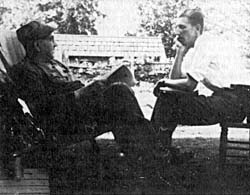
June 29, 2010

Albert Ostman (above, being interviewed by John Green) claimed he was abducted by a family of Bigfoot in 1924. No matter how silly that story may sound out-of-context, his descriptions of Sasquatch have actually stood the litmus test of time.
At the 2003 International Bigfoot Symposium, in a presentation by John Green, the subject of the Sasquatch kidnapping of Albert Ostman was touched upon. In 2006, at Cryptomundo, Craig Woolheater published these comments, and they are still read and misunderstood by readers. Recently, someone sent in a comment claiming John Green had overthrown his opinion on the Ostman story based upon their reading of the 2006 Cryptomundo posting.
Therefore, I would like to post this extraction from that talk, once again, with Green’s permission, for your perusal. It is clear that while Green has received much grief down through the years for interviewing and publishing the Ostman story, he feels it is a valid account.
In this time of much talk about Bigfoot contactees, we must acknowledge that the first ultimate contactee story was from one, Mr. Albert Ostman.
In Green’s own words, here is his 2003 statement below. I would recommend all truly involved in this research should also re-read his 1978 overview of this case in his classic book, Sasquatch: The Apes Among Us.
In this respect I have my own cross to bear, the Albert Ostman story. How could we have taken seriously his tale about being carried off in his sleeping bag by a big male Sasquatch, being kept corralled in a box canyon with a family that included an old lady, a young male and a younger female, and escaping by getting the old male to swallow a box of snuff?
Albert was a very believable fellow, who handled tough cross-examination with cheerful composure, swore to his story without hesitation, and stuck to it until he died, but I wouldn’t believe him if he were telling it today.
Today, however, he would have easy sources for his descriptions of those four individuals and what they did. When his story came to light, in 1957, the opposite was the case.
Sasquatch were not commonly thought of as completely hair-covered creatures living much the same life as a bear, instead their public image was that of a tribe of giant Indians, hairy only on their heads, who lived in villages, held annual get-togethers on a special mountain, and used signal fires.
His descriptions, so contrary to the media image of his time, have stood up wonderfully well over the years. More than that, he was questioned for hours by Daris Swindler and the veterinarian from the Seattle primate center, and they told me that the physical details and the actions he said he had witnessed all rang true.
Did he actually observe such creatures, in whatever circumstances? There is just his story, with no supporting evidence, and that is unfortunate, because there are elements in his story that would be very significant but are not confirmed by subsequent reports. No one else, to my knowledge, has claimed that the females go out and gather food to bring back to a home place, or that Sasquatch sleep in woven blankets of bark and moss, and while there is indeed a widespread assumption that they live in family groups the bulk of evidence suggests, to me at least, that they do not.
Green, of course, is a journalist, and by now, one of the most important Sasquatch investigators of all time. But he is not an anthropologist, so he must be excused for his opinion that family groups of Sasquatch do not exist. Since most sightings are of probable independent juveniles and other interlopers, there may be no correlation between the most frequent (individual) Sasquatch sightings and whether or not they live in small bands, family groups, pairs, or individually. It is all speculation from the human point of view, after all.
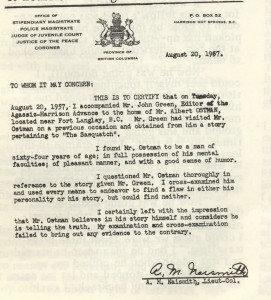
Bigfoot chroniclers such as John Green and Ivan T. Sanderson who actually interviewed Ostman, noted his belief that he had been snatched as a mate for mating purposes with the young female Sasquatch. But here, as in the entire Bigfoot field then, the discussion of sexual matters was taboo. It is instructive to note, as I did in my book Bigfoot!: The True Story of Apes in America., how Sanderson describes this part of his interview with Ostman.
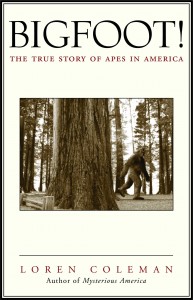
Sanderson found it difficult to obtain primatological details from Ostman about one of the four Sasquatch: “The young female was very shy; she did not approach Ostman closely but kept peeking at him from behind the bushes. He could not estimate her age, but remarks that she was without any visible breast development and was, in fact, quite flat-chested. Like her mother, she had a very pronounced upcurled bang across her brow-ridges. This was continuous from temple to temple. Curiously, no amount of questioning would prompt Mr. Ostman to elaborate any further on this individual, which may in part be psychological since it seems to be his conviction that he had been kidnapped as a potential suitor for her, and I think,” writes Sanderson, “he was a sort of subconscious and rather touching modesty about her shyness. Mr. Ostman maintains a delightful old-world delicacy about the proprieties and neatly turned aside some purely biological questions with such noncommittal phrases as ‘wouldn’t know about that.’”
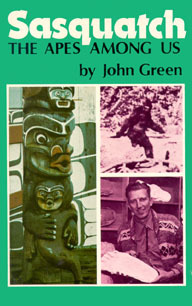

Ostman did have a bit more to say about the males. Don Hunter, writing for Rene Dahinden, in their co-authored book, Sasquatch, noted that in “subsequent talks with Rene, Ostman made particular reference to the size of the old male Sasquatch’s penis. He indicated that the head was hooded with skin and in this respect resembled that of a stallion–but only in this respect. He seemed puzzled by the fact that the old man’s was only about two inches long. Now, if Ostman had been fantasizing about the Sasquatch family, it would seem logical that he would have endowed the male with much more impressive equipment than this, to match the rest of its giant stature And the instance becomes even more interesting when we consider that the gorilla, the biggest of all known primates, itself has to make do with a penis of about two inches in length.”
In email exchanges with me about this in recent years, John Green recalls that Ostman did describe the penis as “like an inverted funnel, which sounds horse-like.” Green, writing in On the Track of the Sasquatch, does not mention these details but on the reality of the overall story wrote: “It is hard to see how Mr. Ostman, whose story was one of the very earliest, could have known so much without having had an opportunity for close observation of all the individuals he describes, and any sequence of events that could make such observations possible would be certain to sound unbelievable.”
As Hunter notes in his book with Dahinden, when Ostman was confronted with an individual’s reservations with his detailed story, he would reply: “I don’t care a damn what you think.”
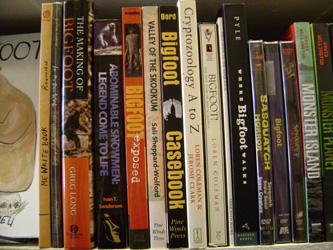
+++++++++
Please, if you can, do…
Thank you, and come visit the museum at 661 Congress Street, Portland, Maine 04101.
About Loren Coleman
Loren Coleman is one of the world’s leading cryptozoologists, some say “the” leading living cryptozoologist. Certainly, he is acknowledged as the current living American researcher and writer who has most popularized cryptozoology in the late 20th and early 21st centuries.
Starting his fieldwork and investigations in 1960, after traveling and trekking extensively in pursuit of cryptozoological mysteries, Coleman began writing to share his experiences in 1969. An honorary member of Ivan T. Sanderson’s Society for the Investigation of the Unexplained in the 1970s, Coleman has been bestowed with similar honorary memberships of the North Idaho College Cryptozoology Club in 1983, and in subsequent years, that of the British Columbia Scientific Cryptozoology Club, CryptoSafari International, and other international organizations. He was also a Life Member and Benefactor of the International Society of Cryptozoology (now-defunct).
Loren Coleman’s daily blog, as a member of the Cryptomundo Team, served as an ongoing avenue of communication for the ever-growing body of cryptozoo news from 2005 through 2013. He returned as an infrequent contributor beginning Halloween week of 2015.
Coleman is the founder in 2003, and current director of the International Cryptozoology Museum in Portland, Maine.
Filed under Bigfoot, Cryptomundo Exclusive, Eyewitness Accounts, Men in Cryptozoology, Sasquatch, Year In Review